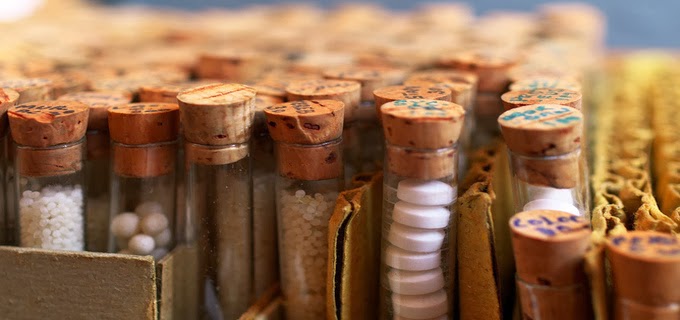The homoeopathic medicine Iris Tenax comes from a plant.
In 1885, Dr. George Vig experimented with this medicine. He tested it on patients
suffering from severe intestinal
colic associated with vomiting of greenish material. Iris Tenax is
somewhat similar to Iris Versicolor. However, there are differences and each
has its own specific characteristics. Iris Versicolor is ideal for the
treatment of hyperacidity of the stomach, whereas in Iris Tenax the
hyperacidity of the stomach is associated with symptoms related to the throat
and mouth cavity. Iris Tenax is considered to be the best treatment for appendicitis.
Therefore, in general, its usage has been restricted only to appendicitis. In
fact, it is also very useful in the treatment of other day-to-day problems.In Iris Tenax, the patient feels a burning sensation inside the mouth.
The surface linings of the tongue, throat and mouth are affected.
The throat becomes dry and drinking cold water does not
help. When the condition becomes worse, severe headache sets in. Often, the headache
settles on the right side, but it may be felt on the left side as well. It is
associated with bilious vomiting. The patient suffers from severe abdominal
pain, associated with the feeling of being tense and distended. There can be
severe cramping as well as diarrhoea. In Iris Tenax the patient remains
depressed and pessamistic. He feels homesick. Sometimes, the tendency to become
depressed may alternate with happiness. There are no associated mental
symptoms. His mood changes suddenly.
Sometimes, he feels happy and at other times very sad. At about midnight, he
feels extremely sad and lonely. The
temple areas hurt. There is burning and itching over the scalp. This itch is not the usual kind but merely a
temporarily associated burning sensation. This is certainly not a permanent
ailment. The burning usually settles over the right eye. The headache comes once a week.
The vomit is of a green colour and sour in taste. The eyes also itch. There may
be associated feeling of burning and pricking.
There is pain over the teeth of left upper jaw. However, in my
opinion, Iris Tenax may also be used for the treatment of
pain affecting any tooth presenting the symptoms just mentioned. Iris Tenax is also associated with diarrhoea. There is pain
and severe cramping in the lower part of the abdomen. Being more
closely appendicitis.
Dr. Vig himself never mentioned the use of Iris Tenax for appendicitis. But in
view of its symptoms, subsequent experimentation with Iris Tenax has found it
to be very useful in the treatment of appendicitis. I have often used Iris
Tenax with Arnica and Bryonia in potency 200 for the treatment of appendicitis,
and found it very useful and amazingly effective. If cramps are the salient symptom,
then instead of Bryonia one should use Belladonna. Very often, appendicitis can
become complicated and lead to a very dangerous situation. The triad just
mentioned can bring the situation under control. I often would get sick with
appendicitis and used to get better with this prescription. Once, while
travelling, I felt uneasy right from the beginning of the journey. I used these
three medicines. We travelled the whole night. The next day, I drove the car
myself for 400 miles and we reached Karachi. The pain had remained under control
throughout the journey. The next day I was taken to a hospital and examined by
a surgeon. He was amazed to find that my appendix had burst open, discharging
pus. The surgeon could not comprehend that not only was I alive but had also
driven the car for 400 miles. Naturally,
I underwent the surgical removal of my appendix, but I did not take penicillin;
instead I used homoeopathic antibacterial drugs. My advice to homoeopathy students, as well as to the patients, is
that they should not totally depend upon these three remedies and keep postponing
the need for surgery. Once the appendix is diseased, the homoeopathic remedies
may only be used temporarily but the removal of the appendix by surgery is
still the best treatment. The pain of
appendicitis can start during any time of the day or night.
However, the usual time described for appendicitis is the
night. According to my experience,
there is no such restriction on the time of the onset of appendicitis. In Iris
Tenax, the pain starts on the right side and then spreads in the entire
abdomen. There is a tendency towards severe vomiting.
On waking up in the morning, the Iris Tenax patient has a
sinking sensation over the stomach. There is severe pain in the abdomen, moving
from the right to the left. Many a time the patient develops diarrhoea at
night, which aggravates further by midnight.
Hyperacidity of the stomach may lead to frequent
urination. If the patient happens to feel a burning sensation during
frequent urination and the colour of the urine is brown, then this is a
symptom of Iris Tenax. Arsenic and Natrum Phos are also useful in the treatment
of this condition, though their individual symptoms should also be kept in
mind. In Natrum Phos, the urine is somewhat pale in colour. Hyperacidity
of the stomach, which causes the urine to turn yellow in colour, is
also found in relation to other medicines. Excessive
and frequent urination leaves the patient very weak and makes it
difficult for him to walk. Such patients should be treated with Iris Tenax. The Iris Tenax patient loses sleep. In spite
of decrease in pain and extreme weakness he is unable to get up in the morning.





